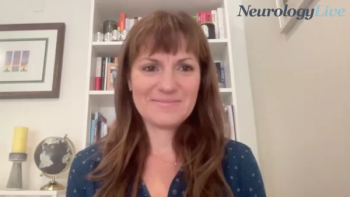
Jeff Waugh, MD, PhD: Viewing Striatal Injury More Granularly
Despite some mistrusting the abilities of imaging to aid in therapeutic development, a new MRI method could better inform the anatomical understanding of the striatum.
“The most important thing that this technique would allow people to do is simply to think in a much more fine-grained manner about striatal injury.”
Although there are camps within the field that hold doubts about the abilities of imaging techniques, Jeff Waugh, MD, PhD, is not in those camps.
The director of the Pediatric Movement Disorders Program at UT Southwestern has helped develop a magnetic resonance imaging technique for identifying the striosome and martix compartments in vivo in the human striatum. While preliminary, Waugh feels that the method holds great potential for increasing the field’s understanding of the brain’s anatomy.
At the American Neurological Association’s (ANA) 143rd Annual Meeting in Atlanta, Georgia, Waugh spoke with NeurologyLive about the ongoing mistrust surrounding imaging’s role in the treatment of neurological diseases. Among these conditions, such as Huntington disease (HD), the technique would allow for a much closer look at the damage done to specific kinds of neurons in the brain.
In theory, the method could also allow for a better anatomical understanding, which in turn could lead to better targeting for the available treatment modalities, such as deep brain stimulation.
REFERENCE
Waugh J, Makis N, Sharma N, Breiter H, Blood A. An MRI method for identifying s
triosome
and matrix compartments in the human striatum in vivo. Neurology. 2016;86(16 Suppl)
:P2.014
.
Newsletter
Keep your finger on the pulse of neurology—subscribe to NeurologyLive for expert interviews, new data, and breakthrough treatment updates.































